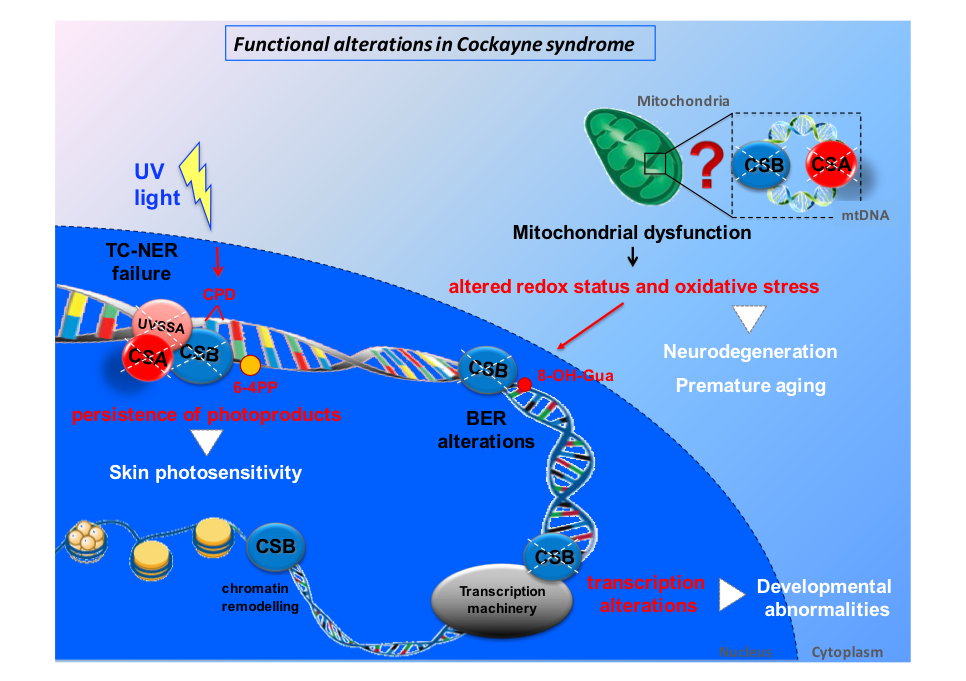Multiple functions of Cockayne syndrome proteins and their interactors
Cockayne syndrome (CS) is a rare autosomal recessive disorder characterized by progressive growth failure, neurological dysfunction, cutaneous photosensitivity and segmental premature aging. Causative mutations have been identified in either ERCC8/CSA or ERCC6/CSB, two genes implicated in the removal of UV-induced DNA lesions (CPD and 6-4PP) from the transcribed strand of active genes by the transcription-coupled branch of nucleotide excision repair (TC-NER). Several lines of evidence point to the involvement of CS proteins in other cellular processes, including mitochondrial metabolism, removal of oxidative DNA lesions by base excision repair (BER), transcription regulation and chromatin remodeling. However, very little is known about the mechanisms through which CSA and CSB act outside TC-NER.
To better investigate the multiple functions of CS proteins and their failure in CS cells, the laboratory focuses its research activity toward the identification of: i) novel factors involved in CS-like clinical features; ii) pathological variants in CS proteins; iii) isolation of CS-interacting proteins and iv) characterization of molecular pathways in which CS and CS-interacting proteins take part.

Collaborations:
- Tomoo Ogi (RIeM, Nagoya University, Japan)
- Luca Bini (Università di Siena, Italy)
